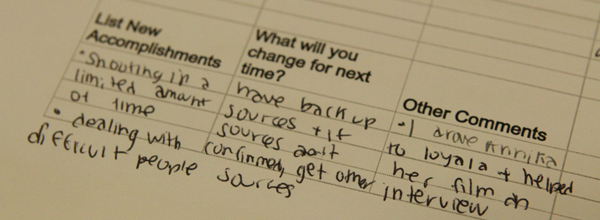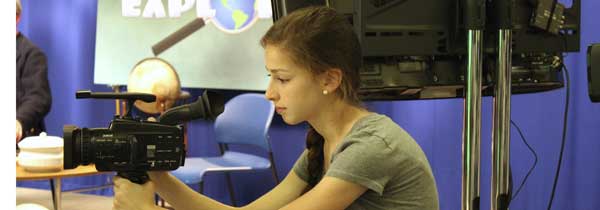How to Grade Broadcast Journalism Students (Part I)
I think the hardest part of advising broadcast journalism students is grading. Afterall, how can you put a grade on effort, creativity, courage and growth? No matter how much I struggle to get it right, I’m continually revising my evaluation system. This is what I’ve come up with so far.

I view grading as a process to set my students up for success, and guide them throughout the production cycle, not just at the end. This means multiple deadlines, multiple evaluations, multiple evaluation techniques, and providing time for revisions before the final product goes live. “Evaluation” to me means guidance and direction as much as it does accountability.

It’s always a good idea to put grading into context for the students. The purpose of journalism is to provide a service to our audience, and what students produce–and how they produce it–can help or hurt a lot of people. Having a higher purpose helps frame your evaluation, and explains the logic behind your standards.
During our three-week production cycle, the reporting teams have at least six different deadlines timed so that producers can help improve the work before it’s too late. The purpose is to amplify the good and fix the bad. Take a look at the weekly evaluation sheet producers complete throughout the production cycle. And these are the final evaluation sheets completed by producers, staffers and the adviser.

Here are some strategies that might help your grading process.
- How we grade student reporting should be just as clear, nuanced, fact-based and meaningful as the reporting we expect from our students.
- Don’t be a bean counter–you have no time for it. Giving points for everything is a waste of time and you can never measure everything.
- No gimmicks, badges or prizes, please. We’re working with professionals (yes, they truly are) and they see right through it. Solid final products and praise–from you, the staff members, other teachers, and the audience–are the best rewards.
- Spend your limited time teaching and evaluating the fundamentals and everything else will fall into place.
- Emphasize the process–this will only lead to good results. This includes generating good story ideas, working productively with teammates, professional use of equipment, etc.
- Reward and acknowledge improvement, not just final results
- Separate evaluations for technical and journalistic elements
- Reward teamwork to avoid competition and build trust within the staff. 30 percent of my grades are participation.
- Let the students participate in the evaluation process. My producers (editors) are trained to coach reporting teams, and give meaningful feedback to students and alert the adviser of their progress. This process resembles a real-world collaboration scenario, and helps give the staff much more feedback than a single adviser could do alone. Reporting teams also self-evaluate and gauge their own progress. After all, it’s THEIR publication, not mine.
- Narrative evaluations are more meaningful than letter grades. We have producers write comments and constructive criticism, and I make sure to meet with each team to review their project.
We also temper the evaluation process with some positive events. Bagel Fridays and warm fuzzies are traditions that allow us time to have fun, and acknowledge the hard work of the staff in front of the whole class. No matter how tough grading can be to give or receive, we’re all here because we care about the cause.
In a future article, I’ll share some tips from other broadcast journalism advisers, their philosophies and grading rubrics.





